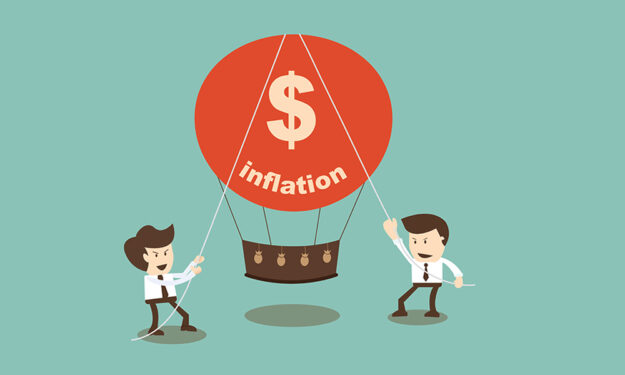WHAT goes up must come down! Broadly, the market expects that global inflation levels will be much lower in 2023 as higher interest rates cool consumer demand and tame inflation amid increasing risks of economic recession in advanced economies.
The unacceptable and uncomfortable levels of inflation top the list of most worrisome issue confronting governments, public and central bankers in 2022.
Soaring inflation had compelled policymakers to implement anti-inflation and price stabilisation measures to soften the blow of inflation burden on public.
Inflation and rising cost of living have eroded the spending power of low-and middle-income households, leaving them with lower net disposable income.
As controlling inflation (price stability) is one of the mandates of central banks, forcing most central banks to raise interest rates aggressively to take off price pressures from both supply shocks and demand pressures as well as to anchor inflation expectations.
Robust pent-up demand reinforced by a strong recovery in the labour market and improved in wage growth must be tamed.
Recent inflation data suggest that consumer prices and producer prices have started to fall from their peak levels.
Inflation rate in the US has slowed for four months in a row, from 9.1% yoy in June 2022 to 7.7% in October while that in eurozone has eased to 10.0% in November from a record high of 10.6% in October.
There are reasons for us to think that there is less cause for concern about inflation in 2023. With food, commodity and energy prices cooling off from their peak levels, the supply disruptions and labour-market pressures subsiding, and combined with the lagged effects of global central banks’ interest rates hikes to cool off demand, global inflation rates will likely cool throughout 2023, but the cool-down period will be long and slow.
Nevertheless, the pace of retreat may be slow throughout the year, meaning that the central banks could still continue with smaller interest rate increases and likely to keep firmly on their toes, holding the interest rate levels longer throughout 2023.
But, will China’s reopening rattle those lower inflation expectations, and will China deflate or reinflate impulse?
China’s rise in demand will help to firm up energy and commodity prices. In China’s domestic market, the presence of slack capacity can be restored to meet revived consumer demand.
While there could be supply disruptions due to the workers’ infection, over time, the smoothening of supply chains as well as follow-through demand and continuous supply would help to ease global inflation pressures.
How about Malaysia’s inflation trajectory in 2023? After peaking at 4.5% yoy in 3Q 2022, headline inflation moderated for the second straight month to 4.0% in October, primarily due to the “electricity component” base effects, non-subsidised fuel and accommodation services.
In the first ten months of 2022, headline inflation increased by 3.3% yoy and core inflation up 2.8%.
Prices of food and non-alcoholic beverages continued increasing by between 6.8% and 7.2% during July–October 2022.
This is despite the price controls and subsidies on eggs, chicken, as well as cooking oil used in the preparation of food. Similarly, electricity tariffs are also heavily subsidised.
Food prices hit low-income households hardest as B40 spent 36.8% of total household expenditure on food items, including restaurants and hotels.
Amid the softening crude oil and commodity prices, we expect both headline and core inflation to remain tilted to the upside in 2023, subjecting to domestic policy measures on subsidies (fuel, food, cooking oil and electricity tariff).
The subsidised RON95 pump price is based on crude oil price between US$55–60 per barrel.
We expect the Government to gradually phase out subsidies, moving from blanket subsidies to targeted approach in 2023 to smoothen out the impact of inflationary pressure on households and cost pressure on businesses.
Domestic price pressures are inevitable as we expect potential changes to domestic policy measures to rationalise subsidies.
We estimate Malaysia’s headline inflation to increase by 2.5%-3.3% in 2023 (estimated 3.5% in 2022). The projected CPI trajectory will be aided by the corresponding high base effects in 2022.
A fall in the inflation rate does not mean that prices in the restaurants, stores, supermarkets and shops will be going down. It just means that they will be going up more slowly than before.
Likewise, higher cost of living isn’t going away anytime soon. The low- and middle-income households continued to be plagued by rising cost of living challenges as broad-based price increases squeezed their tight budget relative to income and wages.
There is no quick fix to cost of living. The Government can implement short-term relieve measures (such as price controls, subsidies, targeted cash handouts, input prices subsidy) to partially mitigate against inflation and higher cost of living.
The long-term solutions are to increase supply of food, reduce dependency on imported consumer durables, lower the cost of production and improve the distribution channels.
We have to work on improving the households’ income through income security programmes for targeted vulnerable households; enhance their employability and earning power through upskilling and reskilling; create better paying employment opportunities; the implementation of productivity-linked and performance driven wage system; and encourage employers to increase the compensation of employees (CE) based on productivity and performance.
Malaysia CE to GDP ratio of 34.8% in 2021 was lower compared to many developed nations: Singapore (49.6%); Japan (56.1%); the United Kingdom (57.4%); the United States (58.2%); South Korea (58.5%); Australia (59.6%); and Germany (63.2%) in 2019. – Dec 14, 2022
Lee Heng Guie is the executive director at Socio-Economic Research Centre (SERC) Malaysia.
The views expressed are solely of the author and do not necessarily reflect those of Focus Malaysia.











